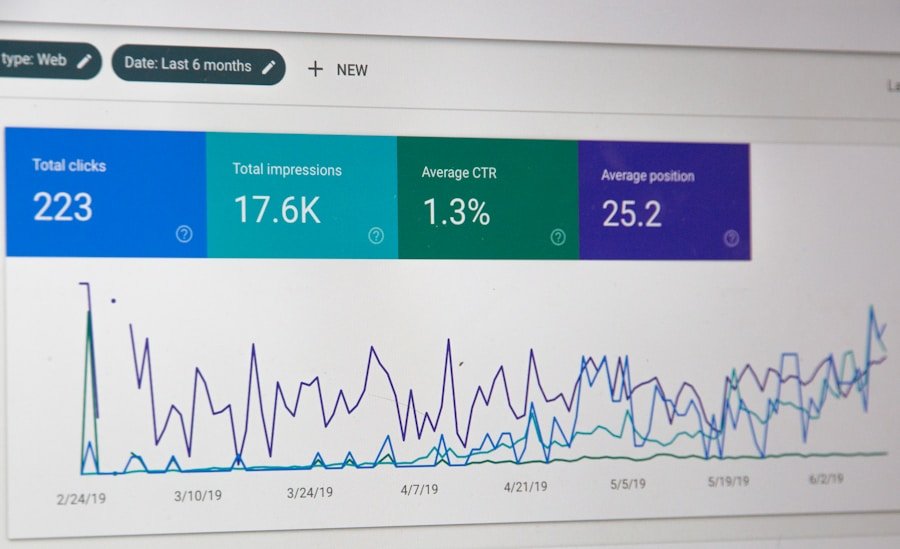Brand sentiment analysis is a crucial component of modern marketing strategies, allowing you to gauge public perception of your brand through the lens of consumer emotions. At its core, sentiment analysis involves the use of natural language processing and machine learning techniques to evaluate the tone and context of online conversations about your brand. By analyzing social media posts, reviews, and other user-generated content, you can determine whether the sentiment surrounding your brand is positive, negative, or neutral.
This understanding can help you make informed decisions about your marketing strategies and customer engagement efforts. As you delve deeper into brand sentiment analysis, you will discover that it goes beyond mere numbers and statistics. It provides insights into the emotional drivers behind consumer behavior.
By interpreting these emotional cues, you can better align your brand messaging with consumer expectations and preferences, ultimately fostering a stronger connection with your audience.
Key Takeaways
- Brand sentiment analysis helps in understanding how customers feel about a brand, product, or service.
- Social listening is crucial for brand monitoring as it allows businesses to track and analyze conversations about their brand on social media and other online platforms.
- Choosing the right tools for sentiment analysis is important to ensure accurate and reliable results.
- Best practices for conducting brand sentiment analysis include defining clear objectives, using a combination of quantitative and qualitative data, and regular monitoring and analysis.
- Analyzing and interpreting the data from brand sentiment analysis can provide valuable insights into customer preferences, pain points, and overall brand perception.
The Importance of Social Listening for Brand Monitoring
Social listening is an essential practice for effective brand monitoring, enabling you to track conversations about your brand across various platforms.
By actively listening to what people are saying about your brand on social media, forums, and review sites, you can gain valuable insights into their perceptions and sentiments.
This proactive approach allows you to identify trends, spot potential issues early on, and engage with your audience in a meaningful way. Moreover, social listening empowers you to understand the competitive landscape better. By monitoring not only your brand but also your competitors, you can identify gaps in the market and opportunities for differentiation.
This intelligence can inform your marketing strategies and help you position your brand more effectively. Additionally, social listening fosters a sense of community around your brand, as it shows consumers that you value their opinions and are committed to addressing their needs.
Choosing the Right Tools for Sentiment Analysis

Selecting the right tools for sentiment analysis is critical to ensuring accurate and actionable insights. With a plethora of options available in the market, it’s essential to evaluate each tool based on your specific needs and objectives. Look for tools that offer robust natural language processing capabilities, allowing for nuanced understanding of context and sentiment.
Additionally, consider tools that provide real-time monitoring and reporting features, enabling you to stay updated on brand sentiment as it evolves. Another important factor to consider is the integration capabilities of the sentiment analysis tools you choose. Ideally, these tools should seamlessly integrate with your existing marketing platforms and customer relationship management systems.
This integration will allow you to consolidate data from various sources and create a comprehensive view of brand sentiment across different channels. Ultimately, the right tools will empower you to make data-driven decisions that enhance your brand’s reputation and customer engagement.
Best Practices for Conducting Brand Sentiment Analysis
To conduct effective brand sentiment analysis, it’s essential to follow best practices that ensure accuracy and relevance. First and foremost, define clear objectives for your analysis. Are you looking to assess the impact of a recent marketing campaign or understand customer feedback on a specific product?
By establishing clear goals, you can tailor your analysis to focus on the most pertinent data. Additionally, ensure that you are analyzing a diverse range of data sources. Relying solely on social media mentions may provide an incomplete picture of brand sentiment.
Incorporate data from customer reviews, surveys, blogs, and news articles to gain a holistic understanding of how consumers perceive your brand. Furthermore, consider segmenting your analysis by demographics or geographic regions to uncover nuanced insights that can inform targeted marketing strategies.
Analyzing and Interpreting the Data
Once you have gathered data through sentiment analysis, the next step is to analyze and interpret it effectively. Begin by categorizing the data into positive, negative, and neutral sentiments. This categorization will help you identify overarching trends and patterns in consumer perceptions.
For instance, if you notice a significant increase in negative sentiment following a product launch, it may warrant further investigation into potential issues with the product or its marketing. As you interpret the data, look for correlations between sentiment changes and specific events or campaigns. For example, if a new advertising campaign coincides with a surge in positive sentiment, it may indicate that your messaging resonates well with your audience.
Conversely, if negative sentiment spikes after a public relations incident, it may signal a need for immediate action to address consumer concerns. By connecting the dots between data points and external factors, you can derive actionable insights that inform your brand strategy.
Using Brand Sentiment Analysis to Improve Customer Experience

Understanding Customer Needs
By understanding how customers feel about their products or services, businesses can tailor their offerings to better meet their needs. For example, if sentiment analysis reveals that customers appreciate certain features of a product but express frustration over others, companies can prioritize improvements based on this feedback.
Personalizing Customer Interactions
Leveraging sentiment analysis also allows businesses to personalize customer interactions. By identifying individual customer sentiments through their online interactions with their brand, companies can create targeted marketing campaigns that resonate with specific segments of their audience.
Enhancing Customer Satisfaction and Loyalty
This personalized approach not only enhances customer satisfaction but also fosters loyalty as consumers feel valued and understood by the brand. By leveraging sentiment analysis, businesses can build strong, long-lasting relationships with their customers, driving growth and success.
Addressing Negative Sentiment and Crisis Management
Negative sentiment can pose significant challenges for any brand; however, how you respond can make all the difference in mitigating damage and restoring trust. When faced with negative feedback or a crisis situation, it’s crucial to act swiftly and transparently. Acknowledge the concerns raised by consumers and communicate openly about the steps you are taking to address them.
This proactive approach demonstrates accountability and shows that you value customer feedback. In addition to addressing immediate concerns, use negative sentiment as an opportunity for growth. Analyze the root causes of negative feedback to identify areas for improvement within your products or services.
By implementing changes based on consumer insights, you not only resolve current issues but also prevent similar problems from arising in the future. This commitment to continuous improvement can ultimately turn negative experiences into positive outcomes for both your brand and your customers.
Leveraging Positive Sentiment for Brand Growth
Positive sentiment is a powerful asset that can drive brand growth when harnessed effectively. When consumers express favorable opinions about your brand, it’s essential to amplify these sentiments through various channels. Share positive reviews and testimonials on your website and social media platforms to build credibility and attract new customers.
Additionally, consider creating case studies or success stories that highlight how your products or services have positively impacted customers’ lives. Furthermore, engage with customers who express positive sentiments by acknowledging their feedback and encouraging them to share their experiences with others. This engagement not only strengthens relationships with existing customers but also encourages word-of-mouth marketing—a potent driver of brand growth.
By actively leveraging positive sentiment, you can create a virtuous cycle where satisfied customers become advocates for your brand, ultimately leading to increased visibility and sales. In conclusion, understanding and utilizing brand sentiment analysis is essential for navigating today’s competitive landscape. By embracing social listening practices, choosing the right tools, following best practices for analysis, and leveraging insights effectively, you can enhance customer experiences while addressing challenges head-on.
Whether dealing with negative feedback or capitalizing on positive sentiments, a strategic approach to sentiment analysis will empower you to build a resilient brand that resonates with consumers in meaningful ways.
If you are interested in improving your brand’s customer segmentation and targeting strategies, you may want to check out the article on Customer Segmentation and Targeting with Polayads. This article provides valuable insights on how to effectively reach and engage with your target audience. By implementing lean six sigma methodologies, as discussed in Lean Six Sigma for SMEs, you can streamline your processes and enhance the overall efficiency of your brand monitoring efforts. Additionally, developing standard operating procedures, as outlined in SOPs Development for SMEs, can help ensure consistency and accuracy in sentiment analysis for brand monitoring.
FAQs
What is sentiment analysis for brand monitoring?
Sentiment analysis for brand monitoring is the process of using natural language processing and machine learning techniques to analyze and understand the sentiment expressed in online content about a brand. This can include social media posts, customer reviews, and other forms of user-generated content.
Why is sentiment analysis important for brand monitoring?
Sentiment analysis is important for brand monitoring because it allows companies to understand how their brand is perceived by customers and the public. By analyzing sentiment, companies can identify trends, monitor brand reputation, and make data-driven decisions to improve their products and services.
How does sentiment analysis for brand monitoring work?
Sentiment analysis for brand monitoring works by using algorithms to analyze the language used in online content and determine whether the sentiment expressed is positive, negative, or neutral. This can involve analyzing the tone, context, and emotions conveyed in the text to understand the overall sentiment.
What are the benefits of using sentiment analysis for brand monitoring?
The benefits of using sentiment analysis for brand monitoring include gaining insights into customer opinions and preferences, identifying potential issues or crises, tracking brand reputation over time, and improving customer satisfaction and loyalty.
What are some challenges of sentiment analysis for brand monitoring?
Challenges of sentiment analysis for brand monitoring include accurately interpreting the nuances of language, dealing with sarcasm and irony, handling language variations and slang, and ensuring the accuracy and reliability of the sentiment analysis results.



